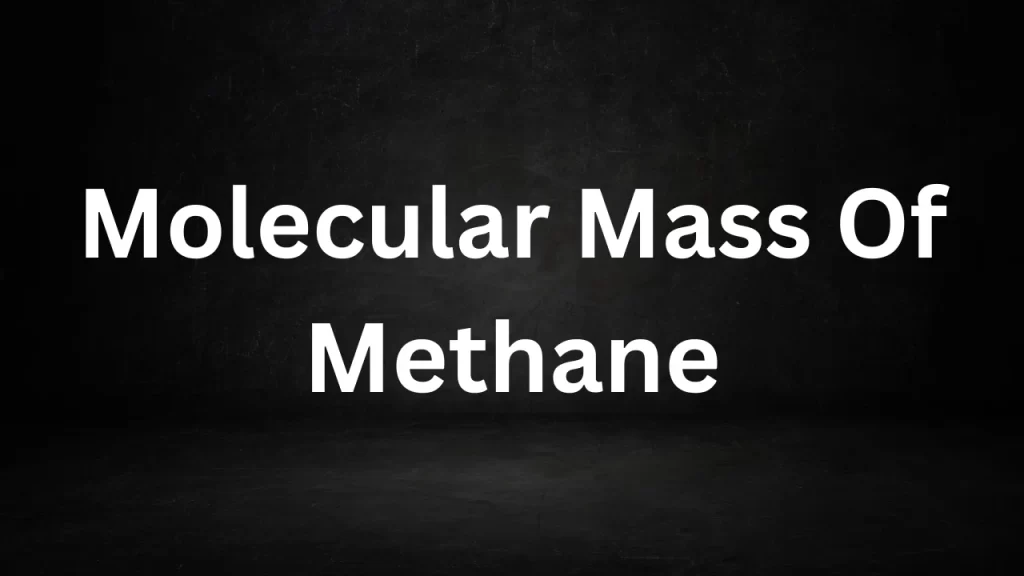Tag: Calculating the Molecular Mass
Molecular Weight Of K
Molecular Weight Of K: Potassium, a chemical element denoted by the symbol K and atomic number 19, is an essential component of the periodic table.
Understanding the molecular weight of potassium is fundamental to various scientific disciplines, from chemistry to biology. In this article, we will explore the molecular weight of potassium, its significance, and its role in different domains.

Molecular Weight Of K
The Nature of Potassium
Potassium (K) is an alkali metal found in Group 1 of the periodic table. It is highly reactive and exhibits notable properties, including its ability to conduct electricity and participate in various chemical reactions. Potassium is vital for the functioning of living organisms and is an essential nutrient in human diets.
Calculating the Molecular Mass
The molecular mass, also known as molar mass or atomic weight, of an element is equivalent to its atomic mass. The atomic mass of potassium (K) is approximately 39.0983 atomic mass units (amu).
Significance of Potassium’s Molecular Mass
- Nutrition: Potassium is a critical dietary mineral required for various physiological functions in the human body, including nerve transmission, muscle contractions, and maintaining proper fluid balance. Its molecular mass is significant in nutritional assessments.
- Agriculture: Potassium plays a crucial role in plant growth and development. The molecular mass of potassium is important in formulating potassium-based fertilizers used to enhance crop yields and quality.
- Chemical Reactions: In chemistry, the molecular mass of potassium is essential for stoichiometry and reaction calculations, particularly in determining the reactant ratios and product yields in chemical processes.
- Medicine: Potassium ions are vital for maintaining heart rhythm and other bodily functions. Knowledge of potassium’s molecular mass is essential in medical diagnostics and treatments for conditions related to potassium imbalances.
- Industrial Applications: Potassium compounds are used in various industrial processes, such as glass and soap production. The molecular mass is relevant in quality control and manufacturing procedures.
- Geology and Earth Sciences: Potassium is used in radiometric dating techniques to estimate the age of rocks and minerals. Its molecular mass contributes to the accuracy of these dating methods.
Conclusion
Potassium, with its molecular mass of approximately 39.0983 atomic mass units (amu), holds a significant place in the realms of chemistry, biology, nutrition, and agriculture. Its unique properties and crucial roles in living organisms and industrial processes make it an indispensable element in our daily lives and scientific endeavors. As we continue to explore the intricacies of nature and utilize potassium’s properties for various applications, its molecular mass remains a fundamental parameter in our understanding of the natural world and our technological advancements.
Read More
- Molecular Mass Of Iron
- Molecular Weight Of NH3
- Molecular Mass Of Methane
- Molecular Mass Of N2
- Molar Mass Of I
Frequently Asked Questions (FAQs) On Molecular Weight Of K
1. What is the molecular weight of potassium (K)?
The molecular weight of potassium (K) is approximately 39.0983 atomic mass units (amu) or 39.0983 grams per mole (g/mol).
2. Why is the molecular weight of potassium significant in nutrition?
Potassium is an essential nutrient in human diets, and its molecular weight is relevant in nutritional assessments and dietary recommendations.
3. How does potassium’s molecular weight impact plant growth and agriculture?
Potassium is crucial for plant growth, and its molecular weight influences the formulation of potassium-based fertilizers used to improve crop yields and quality.
4. In what way is potassium’s molecular mass used in chemical reactions?
In chemistry, potassium’s molecular mass is essential for stoichiometry and reaction calculations. It helps determine reactant ratios and product yields in chemical processes.
5. What role does potassium’s molecular weight play in medical diagnostics and treatments?
Potassium ions are vital for maintaining bodily functions, and knowledge of potassium’s molecular mass is important in medical assessments and treatments for conditions related to potassium imbalances.
Molecular Mass Of Methane
Molecular Mass Of Methane: Methane, the simplest hydrocarbon, is a vital component in the world of chemistry and energy.
Understanding its mole mass is key to comprehending its significance in various scientific, industrial, and environmental contexts. In this article, we will delve into the molecular mass of methane, its composition, and its relevance in diverse fields.

Molecular Mass Of Methane
The Composition of Methane
Methane, represented as CH4, is a hydrocarbon consisting of one carbon (C) atom bonded to four hydrogen (H) atoms. It is the primary component of natural gas and is widely distributed in Earth’s atmosphere, making it a crucial player in the carbon and energy cycles.
Calculating the Molecular Mass
To calculate the mole mass of methane (CH4), we need to consider the atomic masses of carbon and hydrogen. The atomic mass of carbon (C) is approximately 12.011 atomic mass units (amu), while the atomic mass of hydrogen (H) is approximately 1.00784 amu.
The mole mass (also known as molar mass or molar weight) of methane is determined by summing the atomic masses of its constituent elements:
Molecular Mass of CH4 = Atomic Mass of C + 4 × Atomic Mass of H Molecular Mass of CH4 ≈ 12.011 amu + 4 × 1.00784 amu Molecular Mass of CH4 ≈ 16.043 amu
So, the molecular mass of methane (CH4) is approximately 16.043 atomic mass units (amu) or 16.043 grams per mole (g/mol).
Significance of Methane’s Molecular Mass
- Energy Source: Methane is a valuable energy source and is often used as natural gas for heating, electricity generation, and fueling vehicles. Its mole mass is essential for calculating energy content and combustion efficiency.
- Climate Change: Methane is a potent greenhouse gas. Its mole mass plays a role in climate change discussions, as it affects its residence time in the atmosphere and its impact on global warming.
- Chemical Reactions: Understanding the mole mass of methane is crucial in chemical reactions, such as combustion and methane reforming, which are significant in energy production and chemical processes.
- Environmental Monitoring: Researchers use methane’s molecular mass in environmental studies, including the measurement of methane emissions from natural sources and human activities.
- Industrial Processes: Methane’s mole mass is vital in various industrial applications, such as chemical synthesis, metallurgy, and the production of hydrogen and other chemicals.
Conclusion
Methane, with its mole mass of approximately 16.043 atomic mass units (amu), is a fundamental hydrocarbon with diverse applications and implications. It serves as a vital energy source, a contributor to climate change, and a key participant in chemical reactions and industrial processes. As we continue to explore sustainable energy sources and address environmental concerns, the mole mass of methane remains a critical factor in our scientific and technological endeavors.
Read More
- Molecular Mass Of N2
- Molar Mass Of I
- Molecular Weight Of Cl
- Molecular Mass Of Sodium Carbonate
- Molecular Mass Of Nitric Acid
Frequently Asked Questions (FAQs) On Molecular Mass Of Methane
1. What is methane, and why is its molecular mass important?
Methane (CH4) is the simplest hydrocarbon and a major component of natural gas. Its mole mass is crucial for various scientific, industrial, and environmental applications.
2. How is the molecular mass of methane calculated?
To find methane’s molecular mass, add the atomic weights of its elements: one carbon (C) and four hydrogen (H) atoms.
3. What is the molecular mass of methane (CH4)?
The molecular mass of methane is approximately 16.043 atomic mass units (amu) or 16.043 grams per mole (g/mol).
4. Why is methane considered a significant energy source?
Methane, burned as natural gas for heating, power, and vehicles, relies on its mole mass for energy calculations.
5. How does methane contribute to climate change, and what role does its molecular mass play?
Methane is a potent greenhouse gas that traps heat in the atmosphere. Its molecular mass affects its residence time in the atmosphere and its impact on global warming.